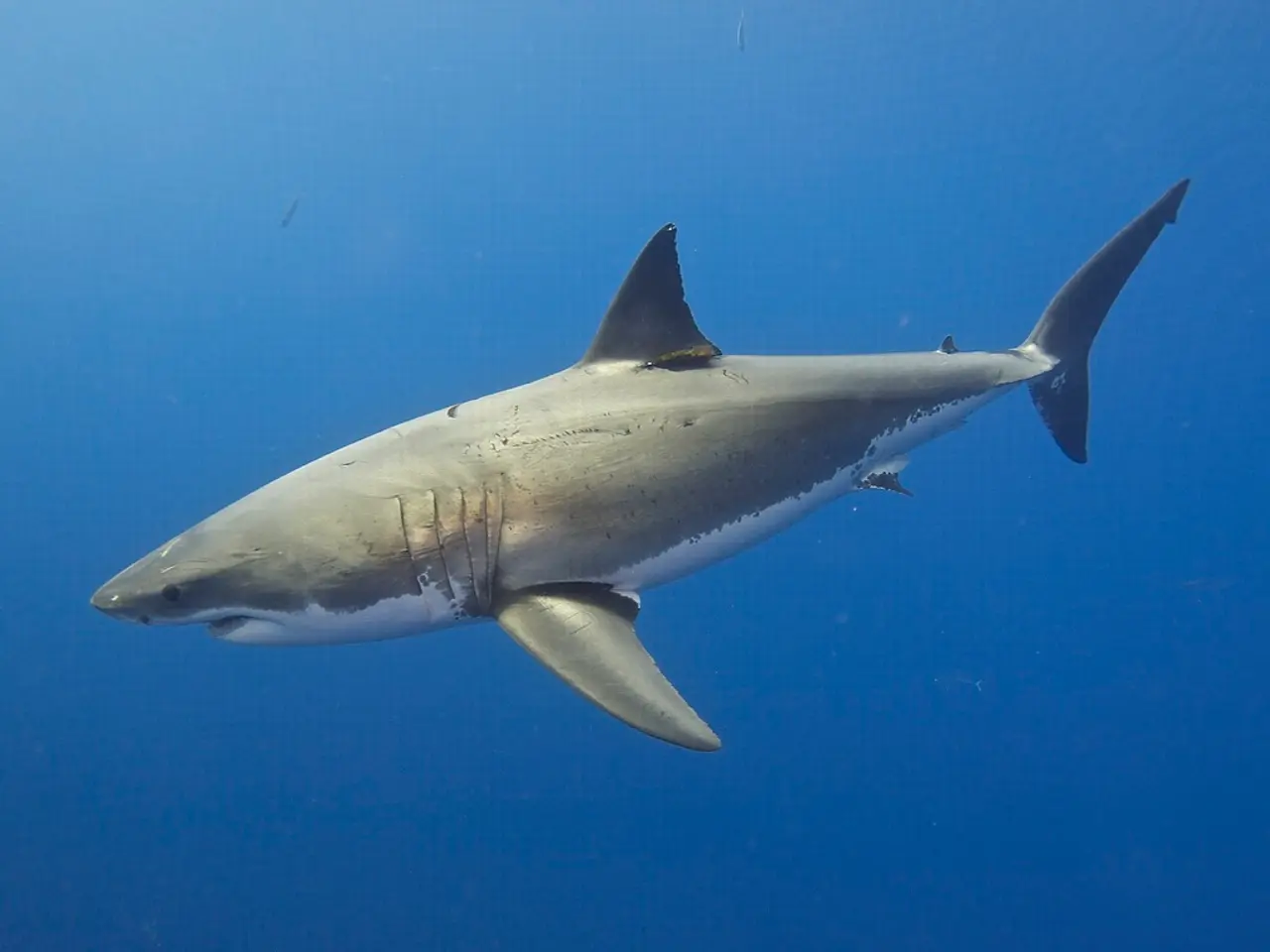A distinct shark species, characterized by glowing eyes and vibrant orange skin, was found in the depths of the Caribbean Sea.
In a groundbreaking discovery, a nurse shark with vivid orange skin has been documented off Costa Rica's Caribbean coast. Measuring approximately two meters, the shark was captured during a sport fishing trip near Tortuguero National Park at a depth of 37 meters and later released.
The nurse shark's unique colouration is identified as xanthism, a pigmentation anomaly characterized by excess yellow or golden tones. This is the first recorded case of xanthism in the Caribbean for this species of nurse shark.
The shark also displayed white eyes "with no visible irises", suggesting a rare case of albino-xanthochromism. Xanthochromism, the condition of white eyes, is associated with xanthism in this shark.
Xanthism has been observed in a handful of animals across various species, including snakes and lizards. While the exact causes of xanthism are not yet fully understood, further research is needed to explore potential genetic or environmental factors influencing this rare pigmentation anomaly in sharks.
Diet has been suggested as a potential contributor to xanthism in some animals, but genetic pathways are considered central to producing the orange phenotype. Xanthism is primarily believed to be a genetic condition, similar to melanism or leucism, but other factors like inbreeding, environmental stress, elevated temperatures, and hormonal imbalances may also influence pigmentation.
The Federal University of Rio Grande-linked team notes that the finding raises questions about underlying genetic diversity in shark populations. The discovery expands what is known about pigment variation in the region's shark populations.
Field biologists documenting future sightings of pigment anomalies, especially with clear photographs of skin and eyes, could help determine how widespread such anomalies are and whether regional environmental pressures play any role in their emergence.
Nurse sharks, unlike many other shark species, can ventilate while stationary due to a buccal pump. This unique physiological trait may have contributed to the survival of the xanthic nurse shark, as bright coloration or white eyes associated with albinism can make animals more visible to predators, potentially lowering survival rates. However, the individual nurse shark with xanthism appeared to have reached adulthood, suggesting the unusual pigmentation did not affect its survival.
This fascinating find adds a rare datapoint from a region where the condition had not been recorded previously, shedding light on the genetic and environmental factors that influence shark pigmentation.
Read also:
- Peptide YY (PYY): Exploring its Role in Appetite Suppression, Intestinal Health, and Cognitive Links
- Toddler Health: Rotavirus Signs, Origins, and Potential Complications
- Digestive issues and heart discomfort: Root causes and associated health conditions
- House Infernos: Deadly Hazards Surpassing the Flames








